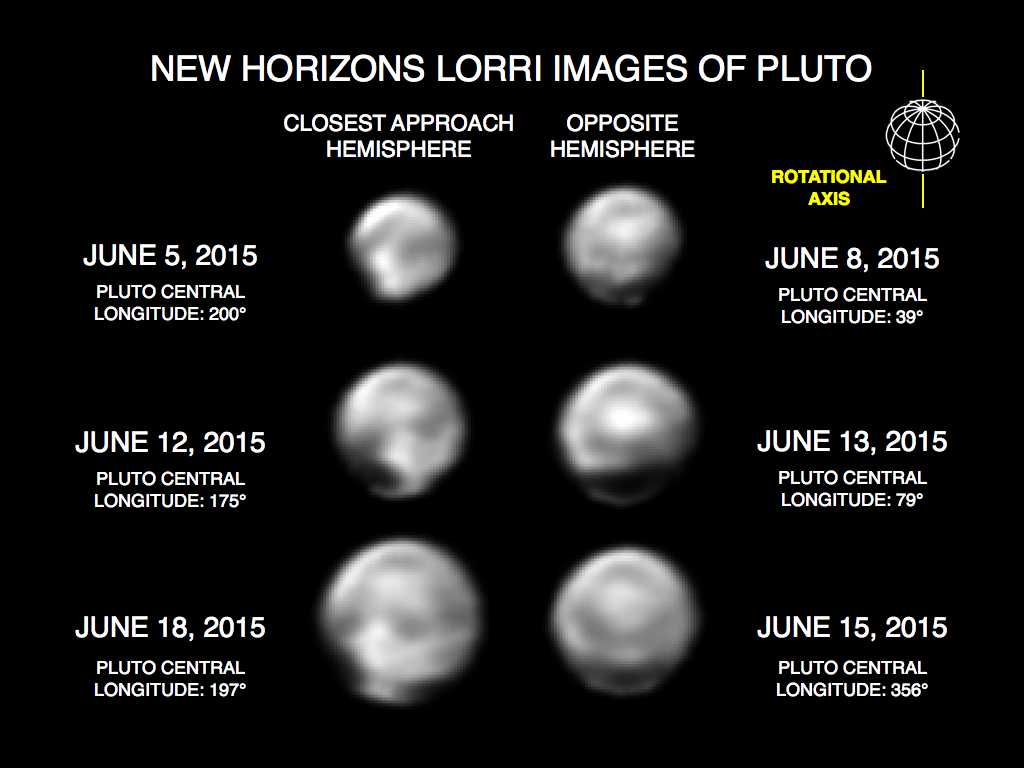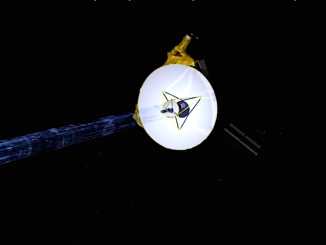STORY WRITTEN FOR CBS NEWS & USED WITH PERMISSION

Now just three weeks from its historic flyby of Pluto, NASA’s New Horizons spacecraft is close enough to detect objects smaller and dimmer than the dwarf planet’s smallest known moon and so far, nothing has been spotted that would pose a threat to the probe as it barrels through the system at more than 30,000 mph, scientists said Tuesday.
In a weekly update, Hal Weaver, the New Horizons project scientist, said the spacecraft’s Long Range Reconnaissance Imager, or LORRI, camera recently snapped 384 images of Pluto and its immediate environment, the latest in a series of scans to look for heretofore unseen rings, uncharted moons or debris that could pose a collision threat.
“This is by far the deepest we’ve looked for new satellites and potential dust in the system that could potentially pose a hazard to the spacecraft,” he said.
The Hubble Space Telescope can barely make out Styx, the smallest of Pluto’s five known moons with an estimated diameter of six to 15 miles. But for New Horizon’s and LORRI, now just 15 million miles out, Weaver said Styx is “a piece of cake.”
“We can go well below the brightness of Styx, and we’re still not seeing anything,” he said. “Which is great from the perspective of danger to the spacecraft.”
In the meantime, the long-awaited images of Pluto are getting better and better as the spacecraft hurtles ever closer.
“The cool thing is, we’re 20 days out and Pluto is now 20 pixels across in LORRI,” he said. “It’s dramatically improved (over earlier images), we’re starting to see more and more surface features on the planet.”
Launched Jan. 19, 2006, New Horizons is on track to streak past Pluto on July 14, capturing high-resolution pictures of the famous dwarf planet, it’s large moon Charon and its four known siblings while collecting a treasure trove of data from a variety of instruments designed to study the geology and composition of the remote worlds.
Currently some 3 billion miles from Earth, radio signals take four hours and 25 minutes to cross the gulf, preventing any sort of real-time commanding. To carry out its mission, New Horizons must hit a precise target in space, at a precise time, to make sure the probe’s instruments are properly aimed to autonomously collect the long-awaited science data.
And all of that depends on a precise knowledge of where Pluto actually is, data New Horizons is constantly updating.
As if the flyby observations were not complicated enough, the trajectory is designed to ensure that New Horizons passes through the shadows of Pluto and Charon to record how sunlight and radio signals from Earth might be affected by passage through the tenuous atmosphere of Pluto and, if it has one, Charon’s.
Gabe Rogers, the New Horizons guidance and control lead at the Johns Hopkins University Applied Physics Laboratory, said a trajectory correction maneuver carried out June 14 slowed the probe slightly to keep it properly aimed.
“We need to be arriving at Pluto at the right time, at the right location in order to maintain the geometry we designed for all of the science observations,” he said.
“It’s also very important to get there at the proper time in order to conduct the Pluto and Charon occultations, where we actually fly behind the planet and the sun then sort of goes out and the scientists are able to collect observations that will tell them the composition of the atmosphere.”
The timing of the arrival is critical. The goal is for New Horizons to pass through a 60-mile by 90-mile-wide target at the end of a 3-billion-mile journey.
“We were coming in a little bit early, so this last (trajectory correction maneuver) slowed us down by about 80 seconds, and it changed the arrival point by a few hundred kilometers,” Rogers said. “We have pretty tight requirements for a 100-kilometer by 150-kilometer box, and we were outside that box. Following this maneuver we’re back inside that box.”
Flight controllers have three more opportunities to tweak the trajectory and Rogers said they will probably need “at least one more” before New Horizons reaches its target.
In the meantime, he said, “everything’s healthy, all the hardware right now is operating nominally and the spacecraft is performing the sequences that we gave it. The images look wonderful, and we’re excited to see what’s next.”



